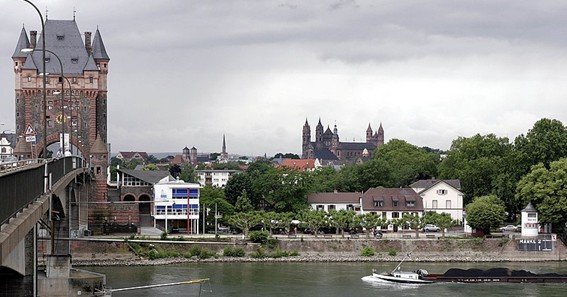The city of Worms, located in present-day Germany, holds a significant place in early medieval history due to its association with the Burgundian people. In the early 5th century, the Burgundians established a kingdom with Worms as its capital. This early Burgundian kingdom, however, differs from the later political entities known as Upper and Lower Burgundy.
The Early Burgundian Kingdom at Worms
Around 413 AD, the Burgundians, a Germanic tribe, crossed the Rhine River and founded a kingdom centered in Worms. This settlement is notably immortalized in the medieval epic, the Nibelungenlied, which portrays Worms as the seat of King Gunther and the backdrop for the tales of Siegfried and the Nibelungs. The kingdom’s existence was relatively short-lived; in 436 AD, Roman General Flavius Aetius, allied with Hunnic forces, defeated the Burgundians near Worms, leading to the kingdom’s collapse.
Emergence of Upper and Lower Burgundy
Following the fall of the initial Burgundian kingdom, the surviving Burgundians migrated southward. They eventually established a new realm in the region that now encompasses parts of modern-day France and Switzerland. This area became known as the Kingdom of Burgundy. During the late 9th century, this kingdom fragmented into two distinct entities:
-
Upper Burgundy (Transjurane Burgundy): Located around Lake Geneva and extending into what is now western Switzerland.
-
Lower Burgundy (Cisjurane Burgundy or Provence): Situated in the region corresponding to present-day Provence in southeastern France.
In 933 AD, these two kingdoms were unified under King Rudolph II, forming the Kingdom of Arles, which was later incorporated into the Holy Roman Empire.
Worms’ Relation to Upper and Lower Burgundy
Given this historical progression, Worms was not part of either Upper or Lower Burgundy. Its significance lies in its role as the center of the original Burgundian kingdom in the early 5th century, predating the establishment of Upper and Lower Burgundy by several centuries. After the fall of the initial kingdom at Worms, the subsequent Burgundian territories developed independently in regions further south and west.
FAQ
1. What was the significance of Worms in Burgundian history?
Worms served as the capital of the early Burgundian kingdom in the early 5th century and is famously depicted in the Nibelungenlied epic.
2. Did Worms belong to Upper or Lower Burgundy?
No, Worms was not part of either Upper or Lower Burgundy. Its association with the Burgundians pertains to an earlier period before these entities existed.
3. Where were Upper and Lower Burgundy located?
Upper Burgundy was centered around Lake Geneva in present-day western Switzerland, while Lower Burgundy corresponded to the Provence region in southeastern France.
4. How did the early Burgundian kingdom at Worms come to an end?
The kingdom was destroyed in 436 AD when Roman forces, allied with the Huns, defeated the Burgundians near Worms.
5. What happened to the Burgundians after the fall of their kingdom at Worms?
Surviving Burgundians migrated southward, eventually establishing new territories that evolved into the later kingdoms of Upper and Lower Burgundy.
In summary, while Worms was integral to the early history of the Burgundian people, it was not part of the later political entities known as Upper and Lower Burgundy. Its legacy remains prominent in both historical records and medieval literature.










